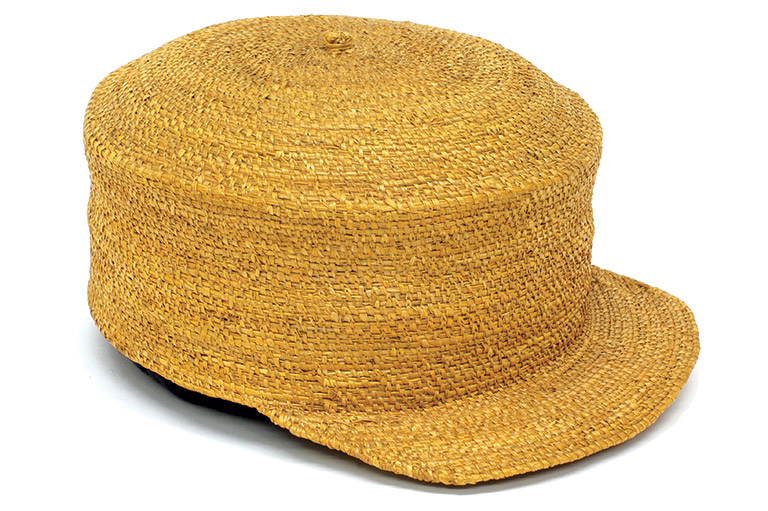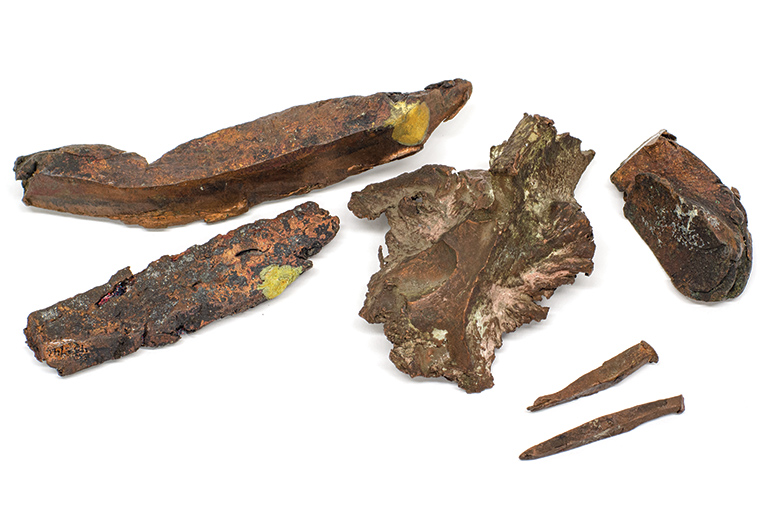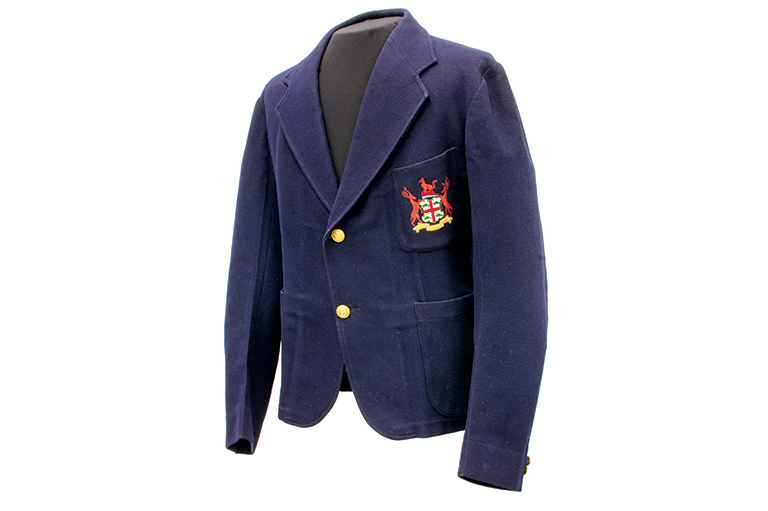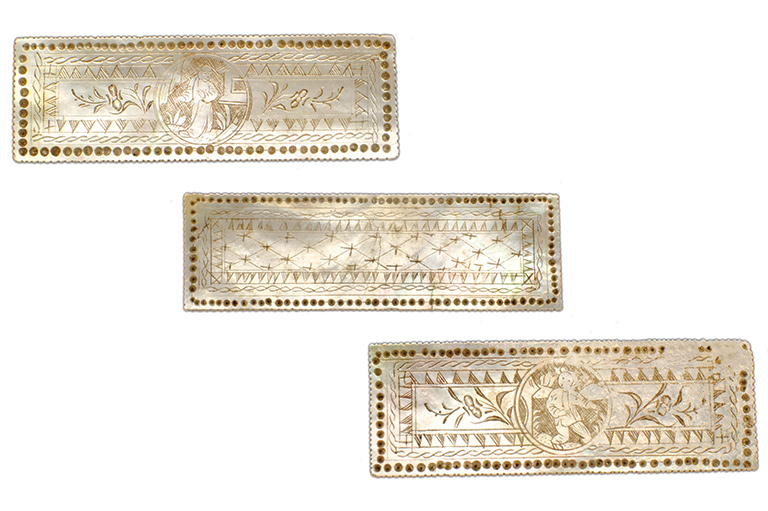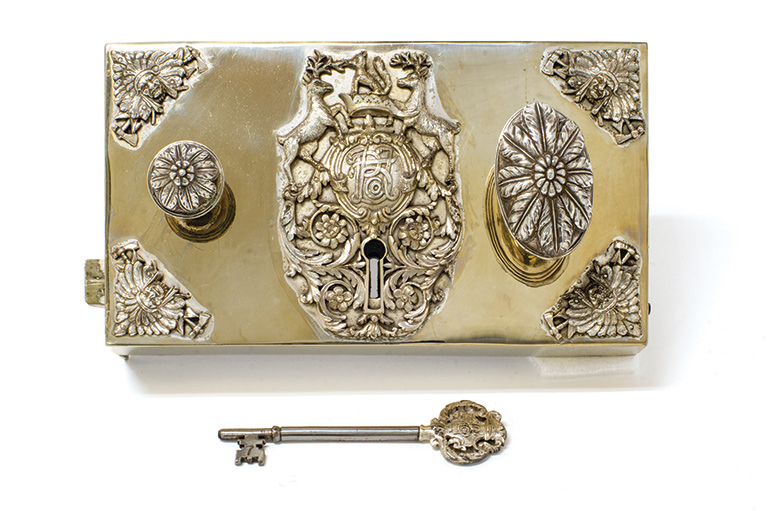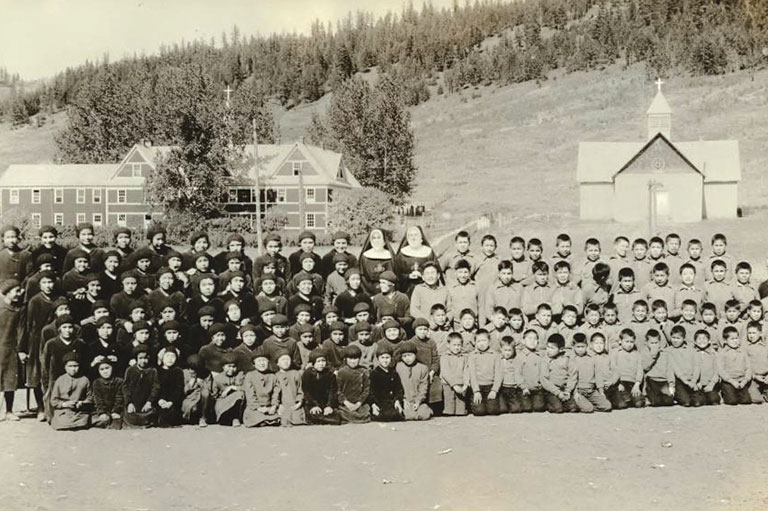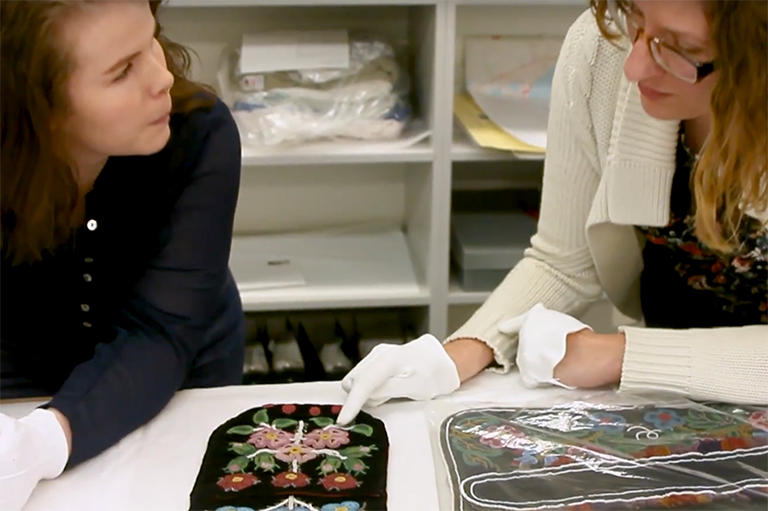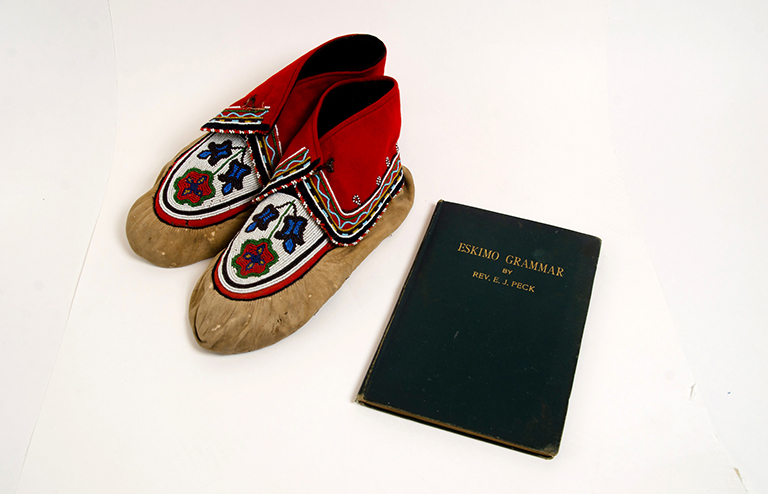Oil Lamp
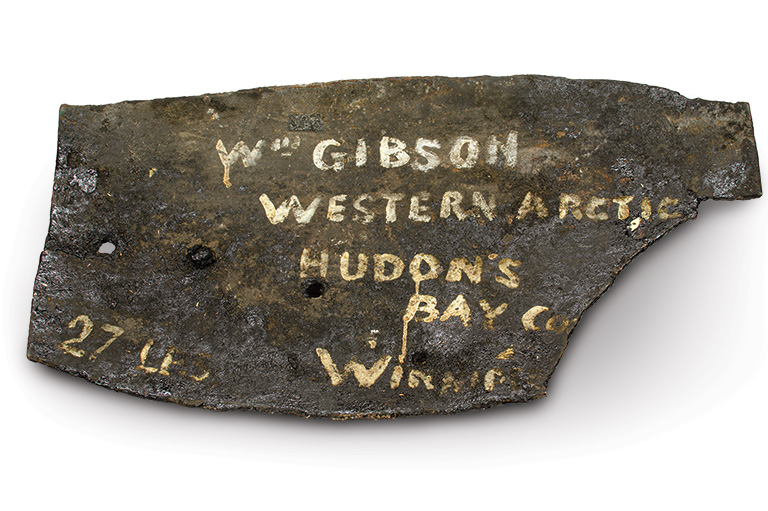
In the early 1830s, some Netsilingmiut — a group of Inuit whose name means people of the place where there is seal — approached an abandoned ship in Victoria Harbour, on the Boothia Peninsula of present-day Nunavut, and salvaged many of the parts for their own use.
Metal was a precious commodity in this region, where access to materials such as soapstone and local copper was limited to trade with neighbouring groups. This large, heavy piece of metal was converted into a qulliq (oil lamp) that was used for light and for heat. It measures seventy-four by forty centimetres and is six centimetres thick.
The metal functioned like a soapstone lamp, with its shallow curve holding oil from a marine mammal. In a typical qulliq, a wick made from a clump of moss or Arctic cotton rests along a raised edge. Women tended to the fire to ensure that it stayed lit.
In 1927, HBC employee William “Paddy” Gibson visited the area, searching for items from Sir John Franklin’s expedition launched in 1845 in search of the Northwest Passage. In speaking with the Netsilingmiut he learned that this metal lamp had once been part of John Ross’s ship Victory, which was abandoned in 1832 during an earlier search for the passage.
Gibson purchased the lamp and must have painted his name on it to send it south for the HBC Museum Collection. The thick encrusted layer of burnt fat demonstrates that it had been used and appreciated for many years.
We hope you’ll help us continue to share fascinating stories about Canada’s past by making a donation to Canada’s History Society today.
We highlight our nation’s diverse past by telling stories that illuminate the people, places, and events that unite us as Canadians, and by making those stories accessible to everyone through our free online content.
We are a registered charity that depends on contributions from readers like you to share inspiring and informative stories with students and citizens of all ages — award-winning stories written by Canada’s top historians, authors, journalists, and history enthusiasts.
Any amount helps, or better yet, start a monthly donation today. Your support makes all the difference. Thank you!
Themes associated with this article
Advertisement
With 7 uniquely curated newsletters to choose from, we have something for everyone.

